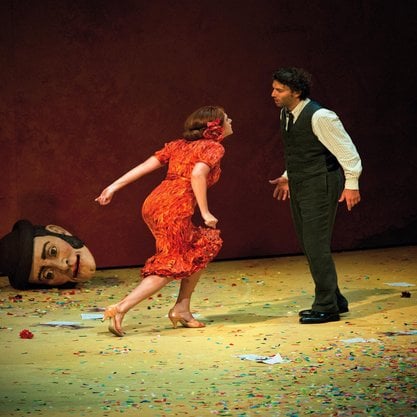Article
Generation of ‘27 By Restrepo-Gautier, Pablo
Article
Abstract
Generation of ‘27 was a group of poets in Spain also known as Generation of 1925, Generation of the Dictatorship (referring to Primo de Rivera’s regime), Generation of the avant-garde, and Generation Lorca-Guillén, among other appellations. The term “Generation of ‘27” arises from a gathering of Spanish avant-garde poets on 16 and 17 December 1927, to commemorate the 300th anniversary of the death of Andalusian baroque poet Luis de Góngora y Argote (1561–1627).
The term most often designates a group of ten poets born between 1891 and 1905: Pedro Salinas (1891–1951), Jorge Guillén (1893–1984), Gerardo Diego (1896–1987), Federico García Lorca (1898–1936), Vicente Aleixandre (1898–1984), Dámaso Alonso (1898–1990), Emilio Prados (1899–1962), Luis Cernuda (1902–1963), Rafael Alberti (1902–1999), and Manuel Altolaguirre (1905–1959). In a broader sense, the term may also include other artists such as painters Salvador Dalí (1904–1989) and Maruja Mallo (1902–1995), filmmaker Luis Buñuel (1900–1983), and musician Rosa García Ascot (1902–2002). Most members of the group met in Madrid at the influential cultural center known as the Residencia de Estudiantes.
A revised and expanded version of this article is available here.
Generation of ‘27 was a group of poets in Spain also known as Generation of 1925, Generation of the Dictatorship (referring to Primo de Rivera’s regime), Generation of the avant-garde, and Generation Lorca-Guillén, among other appellations. The term “Generation of ‘27” arises from a gathering of Spanish avant-garde poets on 16 and 17 December 1927, to commemorate the 300th anniversary of the death of Andalusian baroque poet Luis de Góngora y Argote (1561–1627).
The term most often designates a group of ten poets born between 1891 and 1905: Pedro Salinas (1891–1951), Jorge Guillén (1893–1984), Gerardo Diego (1896–1987), Federico García Lorca (1898–1936), Vicente Aleixandre (1898–1984), Dámaso Alonso (1898–1990), Emilio Prados (1899–1962), Luis Cernuda (1902–1963), Rafael Alberti (1902–1999), and Manuel Altolaguirre (1905–1959). In a broader sense, the term may also include other artists such as painters Salvador Dalí (1904–1989) and Maruja Mallo (1902–1995), filmmaker Luis Buñuel (1900–1983), and musician Rosa García Ascot (1902–2002). Most members of the group met in Madrid at the influential cultural center known as the Residencia de Estudiantes.
The term “literary generation,” as defined by Julius Petersen in Die literarischen Generationen (Berlin, 1930), has been widely used in Spanish literary history, but it remains controversial, with some critics opting to use less restrictive labels, such as group or constellation. Additionally, “generation” is controversial because the Generation of ‘27 lack some of the criteria that define a literary generation: historical motivation, clear leadership and shared influences, technique, and style. Although the poets of the Generation of ’27 did not have a clear leader, they did hold poet Juan Ramón Jiménez (1881–1958) in high regard and were fond of philosopher and essayist José Ortega y Gasset (1883–1955).
An eclectic assortment of influences, techniques, and styles characterizes their literary and artistic production. Nonetheless, the poetry of the group in its initial stages reveals some commonalities, such as the use of metaphor, the stylization of reality, and youthful optimism. Disparate literary trends such as neo-Gongorismo (a revival of Góngora’s baroque style), neopopularismo (a stylization of traditional popular culture), neo-Romanticism, pure poetry, and surrealism, along with other avant-garde movements, influence the members of the Generation of ’27 at different points in time. In a modernist vein, they reject the style of realist writers and their belief in the possibility of objectivity.
Under the influence of neo-Gongorismo and ultraísmo, a Spanish avant-garde movement that arose in 1918 as a reaction to the then-predominant modernista style, the Generation of ’27 initially envisioned metaphor as an act of creation, a process that links two objects in surprising and unexpected ways to produce a new and wondrous entity, devoid of the emotional and intellectual connotations of the original terms. In his talk on Góngora’s poetic image, “La imagen poética de don Luis de Góngora,” Lorca makes a statement that may well summarize the essence of metaphor for the poets of 1927: “La metáfora une dos mundos antagónicos por medio de un salto ecuestre que da la imaginación” [“A metaphor unites two opposing worlds thanks to the equestrian jump of the imagination”].
Around the advent of the Second Spanish Republic in 1931, most members of the Generation of ’27 become politicized and support the new government. As a result, the Generation moves towards a more humanized type of literature, social poetry, of which Alberti, who joins the Communist Party, is its main representative. Lorca founds La Barraca, a traveling university theater troupe charged with the mission of taking 17th-century Spanish drama to the most disadvantaged areas of Spain. Altolaguirre leads La Barraca during the Civil War (1936–1939) and, along with Prados, joins the republican forces. Diego, as opposed to most of his poet friends, sides with the nationalist faction that rises against the Republic.
The Spanish Civil War disbands the Generation of ’27. Lorca is murdered at the outset of the conflict in 1936; Alberti, Altolaguirre, Cernuda, Guillén, Prados, and Salinas go into exile; Diego, having supported the nationalists, remains in the country; Alonso does not leave Spain, but keeps a critical position vis-à-vis the dictatorship; and Aleixandre stays after the fighting ends in 1939 to live under the dictatorship of Francisco Franco in what he calls “exilio interior” [“internal exile”].



